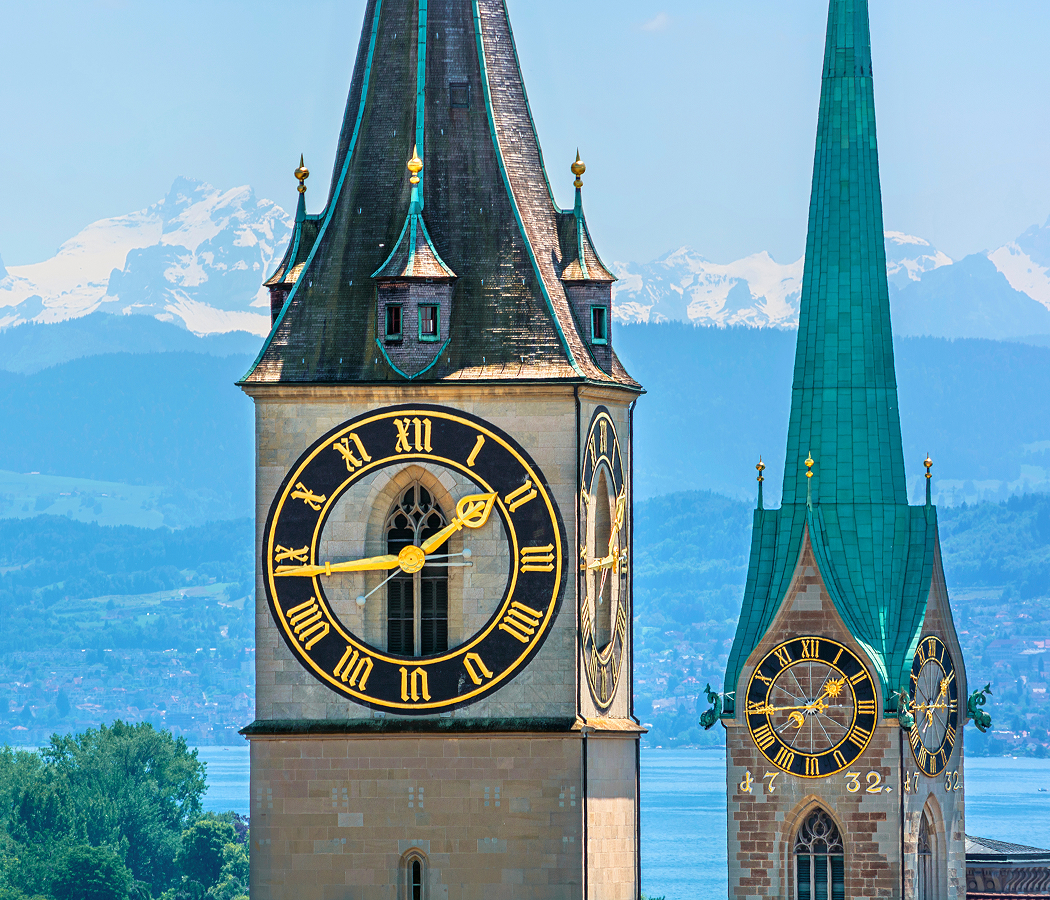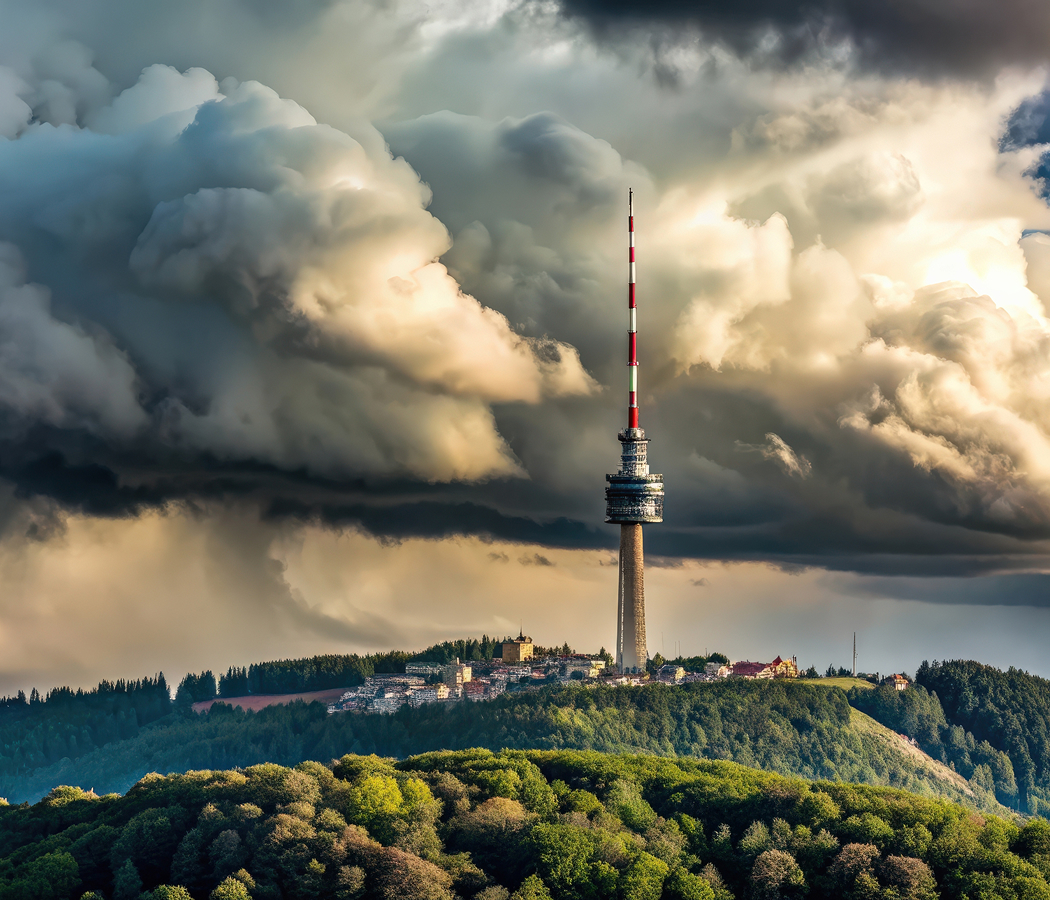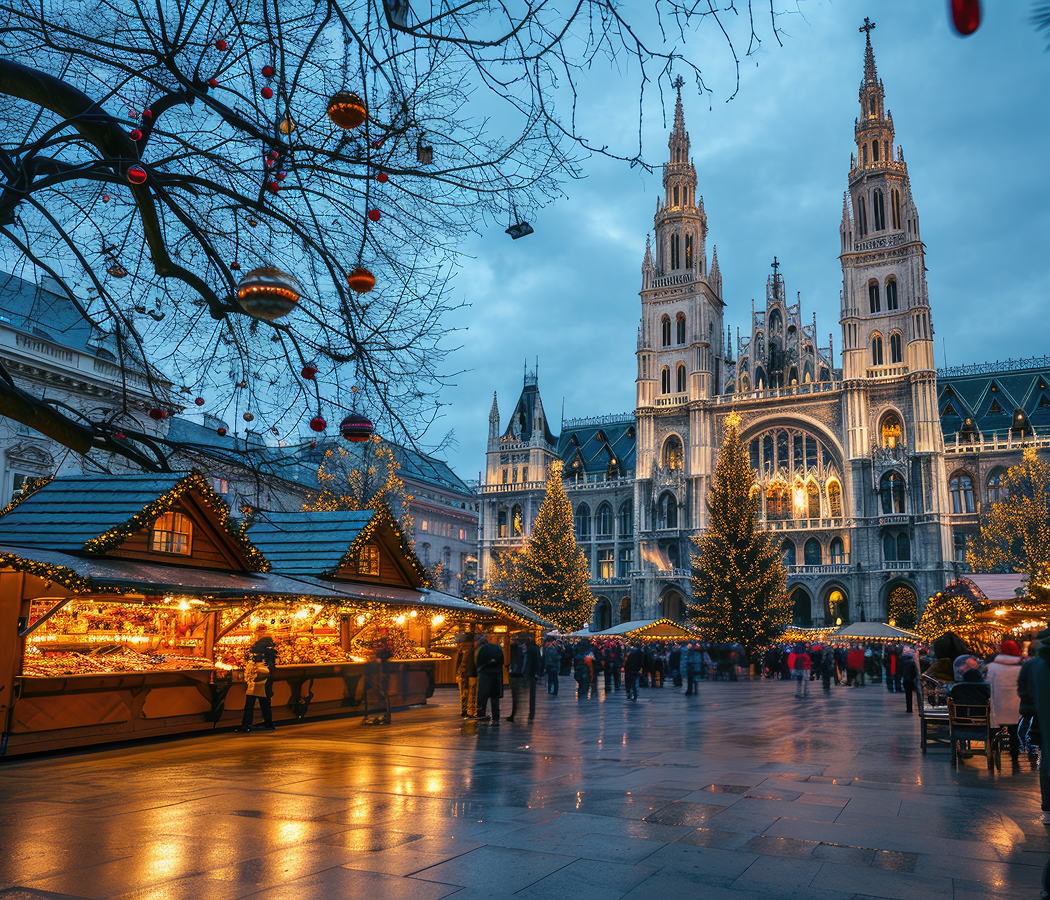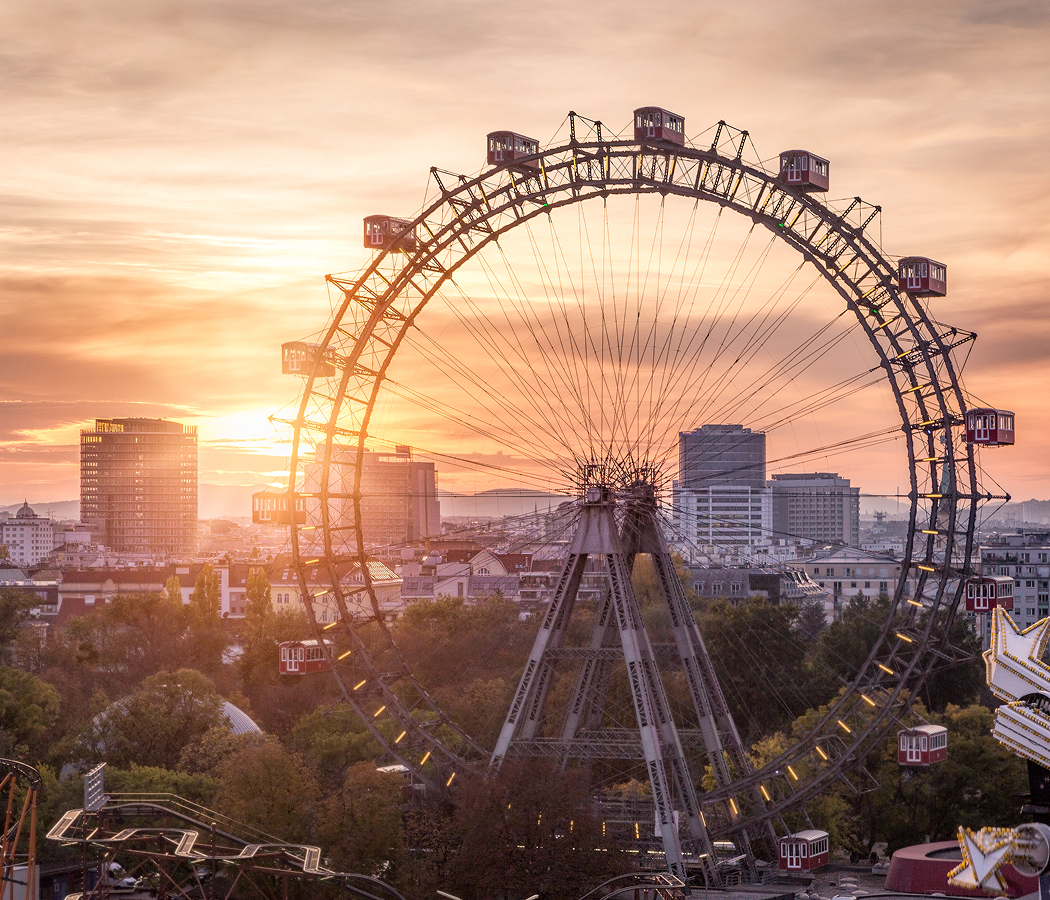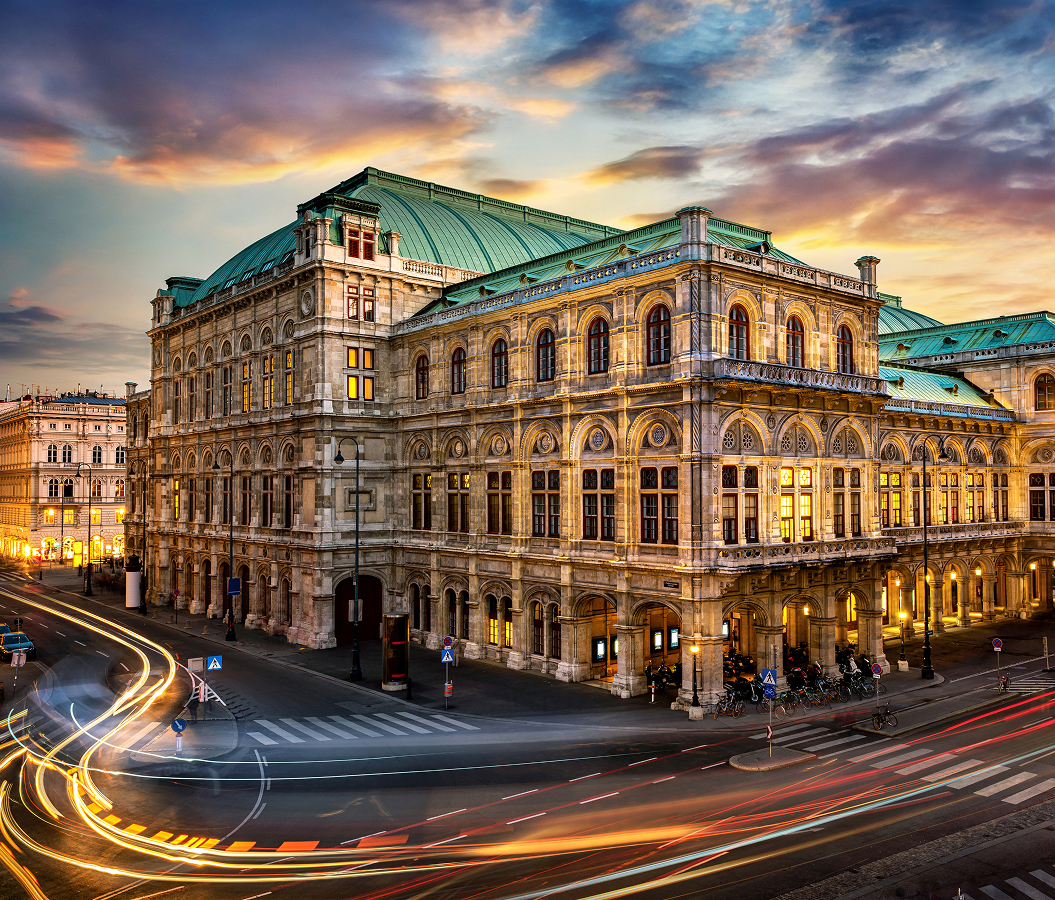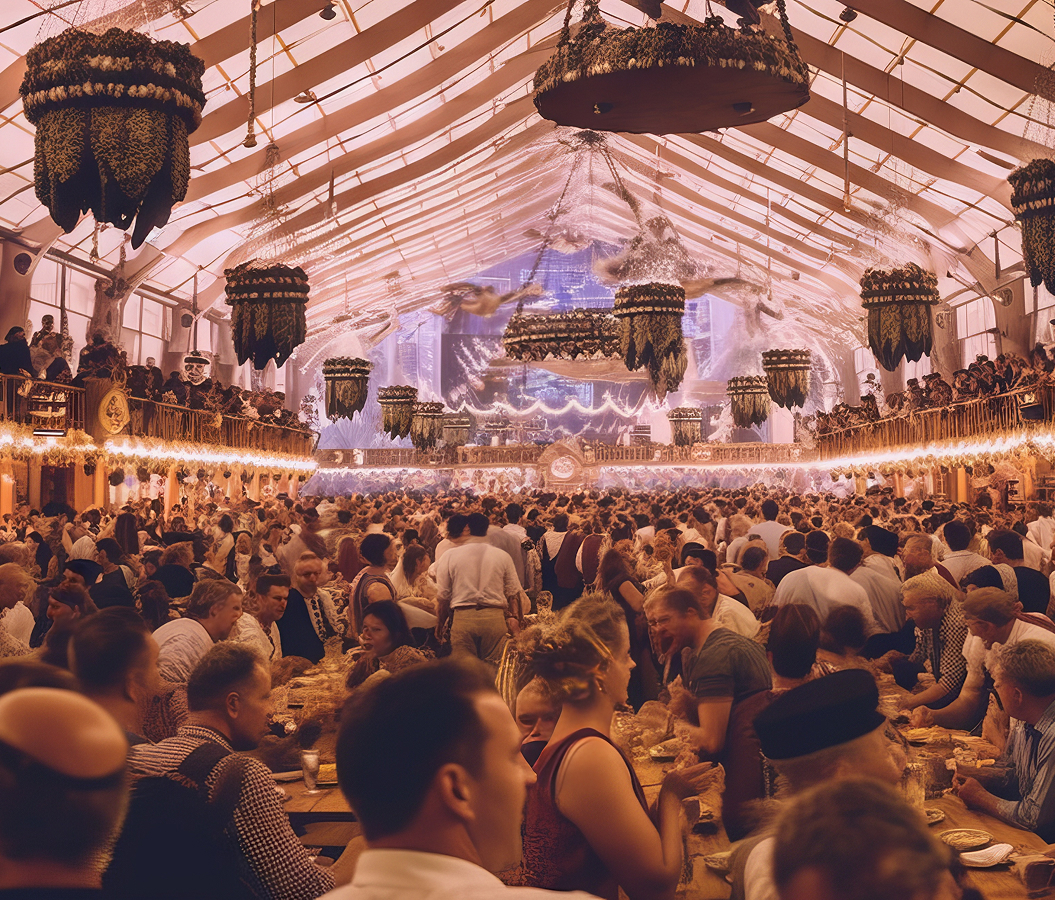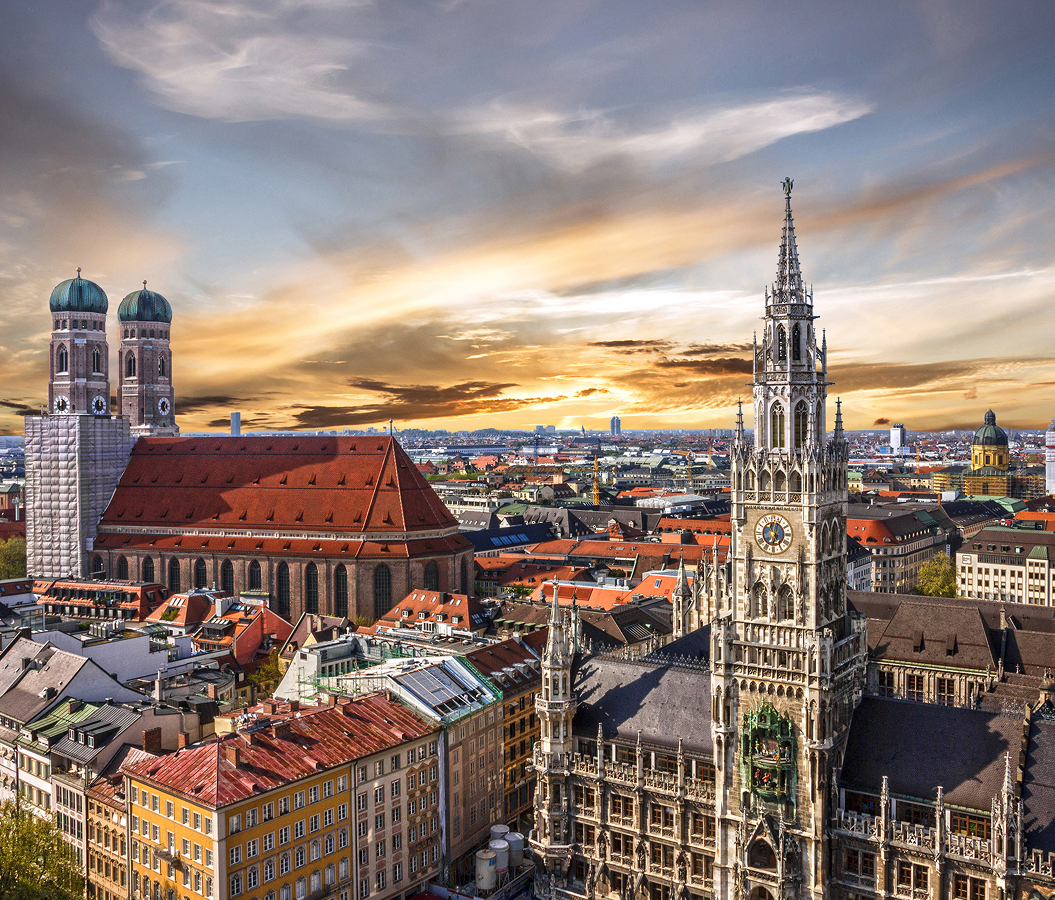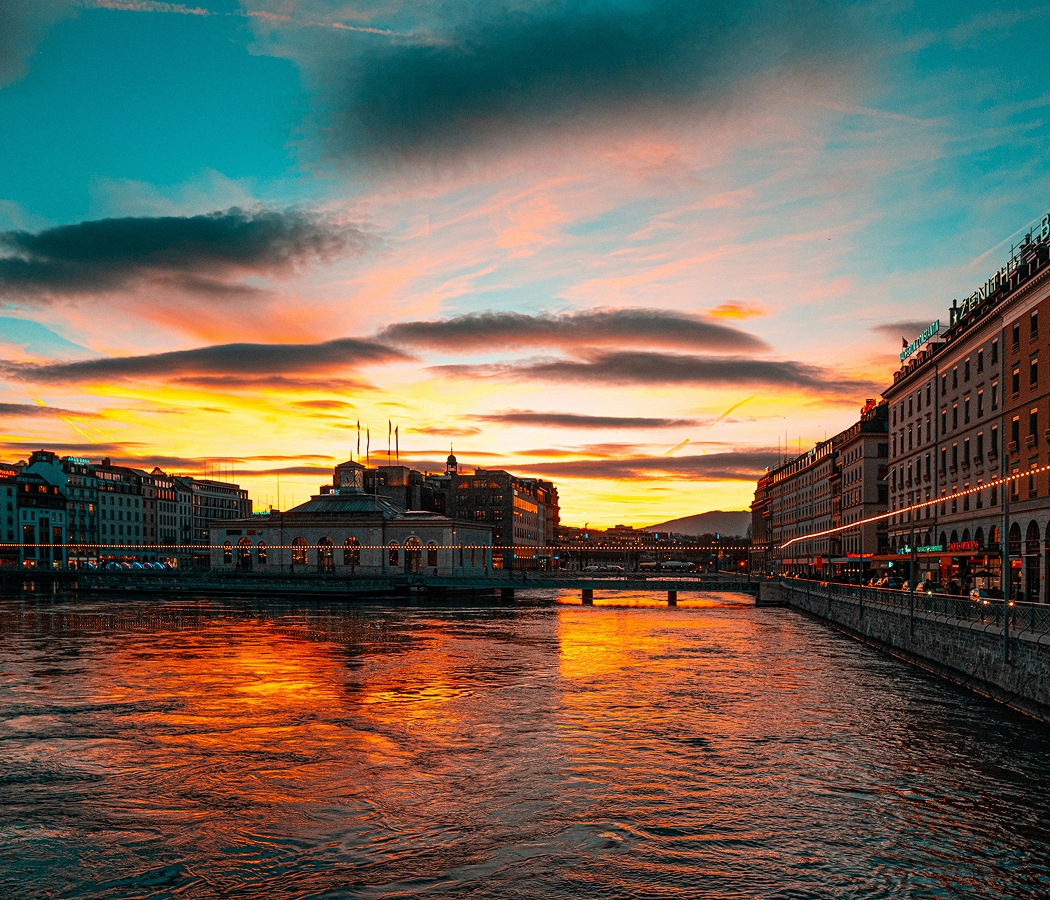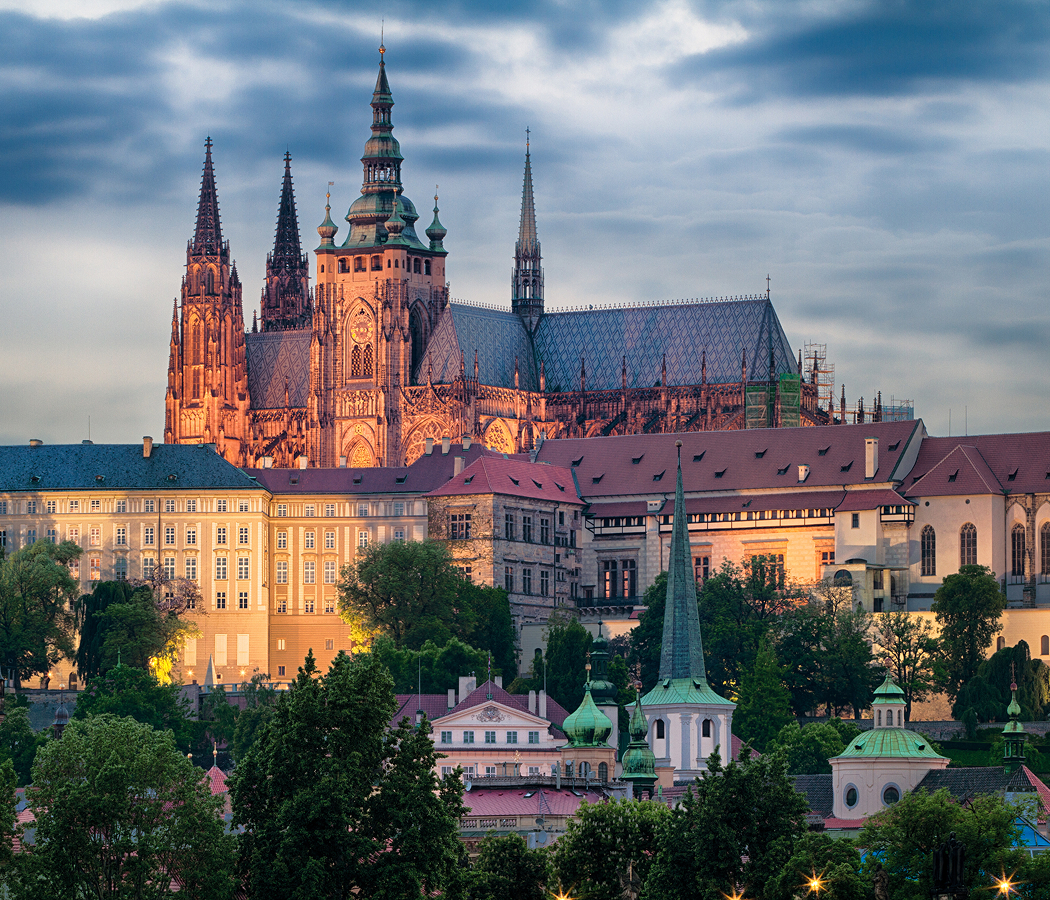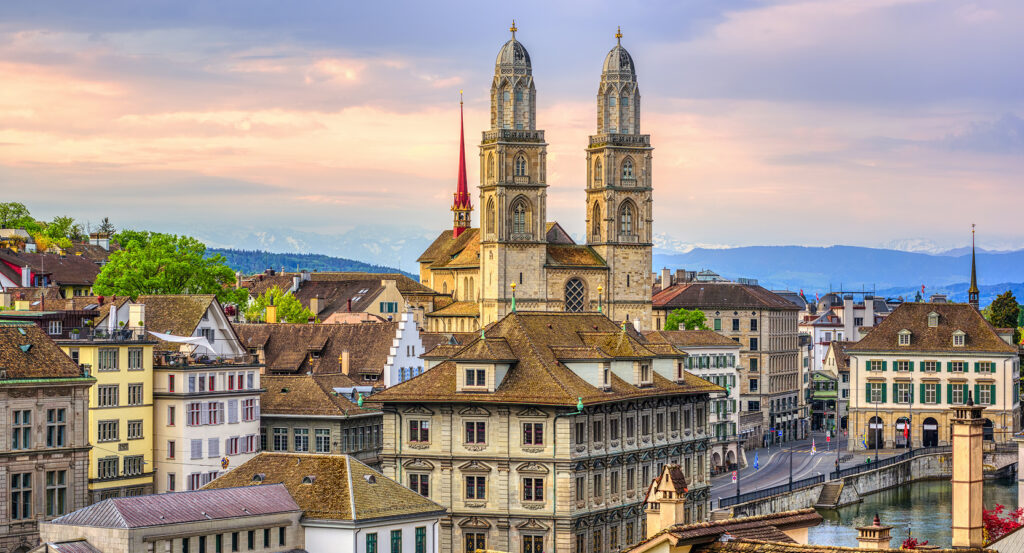
Why you should experience Grossmünster in Zürich.
Grossmünster rises above Zürich’s old town like a pair of watchful sentinels, twin Romanesque towers that have witnessed nearly a millennium of the city’s unfolding story.
Perched along the banks of the Limmat River, it is one of Zürich’s most defining landmarks, not just for its silhouette, but for the history, spirit, and quiet resilience it embodies. Step through its heavy wooden doors, and the clamor of the modern city fades into the hush of vaulted stone. The air feels ancient, tinged with the faint scent of incense and centuries-old wood. Inside, light filters through stained glass windows by Swiss artist Augusto Giacometti, bathing the nave in a soft kaleidoscope of color. The architecture is pure and powerful, clean lines, thick pillars, and a simplicity that mirrors the Protestant Reformation it helped ignite. Grossmünster hums quiet, a space that doesn’t demand reverence but gently invites it. For those who climb the Karlsturm tower, the reward is one of Zürich’s most breathtaking panoramas, rooftops, the lake shimmering in the distance, and the snow-capped Alps framing it all like a divine painting. It’s not just a church; it’s Zürich’s spiritual heartbeat, cast in stone and echo.
What you didn’t know about Grossmünster.
Grossmünster’s story reaches back nearly a thousand years, a tale of faith, rebellion, and renewal that shaped Zürich’s identity.
Legend claims it was founded by Charlemagne himself, who, according to myth, discovered the graves of the city’s patron saints, Felix and Regula, on the very site where the church now stands. Construction began around 1100 and continued for more than a century, resulting in one of Switzerland’s most remarkable examples of Romanesque architecture. But it wasn’t only stones that were laid here, it was ideas. In the 16th century, reformer Huldrych Zwingli preached from this very pulpit, launching the Swiss Reformation and redefining faith across Europe. His sermons called for simplicity and intellect over ornamentation, and that ethos still resonates in the church’s spare, luminous interior. The Giacometti windows, added centuries later, brought color and emotion back into its sacred space, a quiet reconciliation between austerity and art. Beneath the church, the crypt holds archaeological remains from earlier structures, including Roman foundations that whisper of Zürich’s even deeper past. Few realize that the twin towers were not always symmetrical; one was once slightly taller than the other until renovations in the 18th century brought them into harmony. Each detail, from the bronze doors sculpted with biblical scenes to the carved stone capitals, feels like a chapter in Zürich’s story, a dialogue between time and devotion.
How to fold Grossmünster into your trip.
To experience Grossmünster fully is to approach it not as a tourist, but as a pilgrim, someone willing to listen to the silence between the bells.
Start your visit from the Münsterbrücke, where the church’s reflection ripples across the Limmat. Approach slowly; the twin towers rise higher with every step, commanding yet grounded. Inside, let your eyes adjust to the soft dimness, and wander without haste. Pause before the Giacometti windows to watch the sunlight shift through reds and blues, or trace your fingers along the stone columns that have stood for nine centuries. If you’re drawn to history, visit the small crypt and read the plaques dedicated to Zürich’s early saints, it’s here that the city’s spiritual roots truly reveal themselves. Then, climb the narrow spiral staircase to the Karlsturm tower. The ascent is steep and winding, but each turn brings you closer to the skyline’s crown. From the top, Zürich unfolds below, the lake shimmering, the Alps rising beyond, and the old town stretching like a story you can almost read from above. Visit in the late afternoon when the light turns golden and the bells toll softly across the river. When you descend, linger in the courtyard or stroll along the adjacent Grossmünsterplatz, where street musicians often play beneath the towers. Grossmünster isn’t just a landmark; it’s a living symbol of Zürich, steadfast, contemplative, and quietly magnificent, a place where faith, history, and beauty converge in the heart of the city.
Hear it from the Foresyte community.
Inside is calm, almost too calm, but the tower climb? Whole different vibe. You huff up the stairs, get to the top, and it’s like Zurich laid itself out just for you.
Where meaningful travel begins.
Start your journey with Foresyte, where the planning is part of the magic.
Discover the experiences that matter most.


